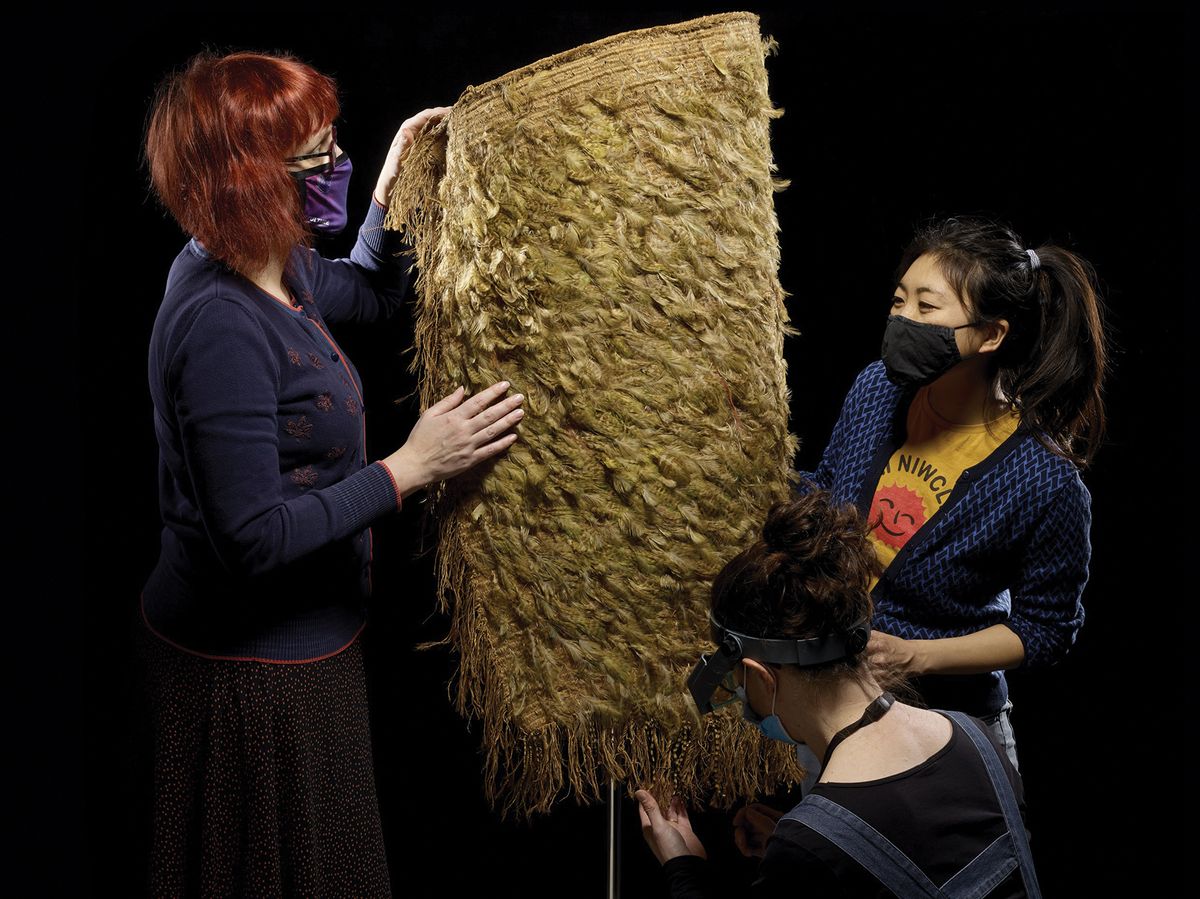A unique 19th-century Māori feather cloak, created from thousands of green parrot feathers woven into a grass fabric, has been conserved for display in Scotland’s new £27m Perth Museum.
The cloak is a special object to the descendants of its makers: Māori people were invited to Perth to pray and sing over it as it was carefully packed for transport and travelled to the British Museum in London, where the conservation work was done. A closed Facebook group allowed daily exchanges between the two UK museums, the Museum of New Zealand Te Papa Tongarewa and Māori communities.
The cloak has been in the Perth collections since the mid 19th century and is believed to be the only surviving complete example of a kahu kākāpō, a cloak woven with the feathers of kakapo parrots. Such garments were always rare and precious, made for ceremonial wear by the highest status individuals.
The kakapo are the largest species of parrot. Nocturnal and flightless, they forage and breed at ground level—traits that have contributed to their near extinction. The birds were valued and kept as pets, but also hunted for food by the Māori.
However, it was the arrival of non-native rodents and Europeans with dogs that almost wiped them out. In the wild, they now survive only on a few small islands that have been cleared of predators.
A 200-year-old Scottish connection
The cloak was acquired by David Ramsay, a doctor from Perth who sailed to Australia as a ship’s surgeon in 1823, and never returned. Instead, he became a prosperous farmer and a trader and collector of Australian and New Zealand antiquities. It is not known whether he bought the cloak in Australia or in New Zealand, but it was part of a large collection he sent back in 1842 to the Perth Literary and Antiquarian Society, the predecessor of the current museum.
Mark Hall, the Perth Museum’s head of collections, and the conservator Anna Zwagerman believe it was made in the early 19th century, after European contact. It comprises thousands of small green feathers completely covering a cloth woven from native plant fibres. Zwagerman says that when she first saw it, she was afraid to lift it from its storage box in case it disintegrated in her hands—it had been packed with a bag of feathers and broken fibres which had already detached.
Conservation experts at the British Museum are the acknowledged leaders in feather work, and a UK Partnership Knowledge Share project enabled Zwag-erman to spend weeks in London working with the team. Tiny strips and fibres of mulberry paper were dyed to match and glued to support broken feather shafts and crumbling fibres—more than 100 hours of work with magnifying glasses and scalpels. A special mount was made to support the cloak for display, after study of the wear marks determined that it had originally been fastened on one shoulder—and that it could only have been worn for a very short period, given its remarkable condition.
The museum’s new building, a conversion of the Edwardian former city hall by the Dutch firm Mecanoo, was set to open on 30 March, as we went to press, with star objects including the Stone of Scone coronation stone, returned to Scotland in 1996 from its former home in Westminster Abbey, and now in Perth for the first time in 700 years. The conversion was funded by the local authority and £10m from the Tay Cities Region Deal regional investment programme jointly funded by the UK and Scottish governments. The city’s fine art collection will now take over all the space in the museum’s former home, rebranded as Perth Art Gallery.
Despite the cloak’s unique status, there is no official restitution claim. Some years ago, the Perth Museum returned two tattooed human heads, one collected by Ramsay, to the Museum of New Zealand Te Papa Tongarewa in Wellington, and communications between the two museums are now regular and warm.
Awhina Tamarapa, the New Zealand-based Māori curatorial adviser, said the project demonstrates the importance of employing specialists from descendant communities. Hopes for future collaboration include a wish that the cloak may one day travel back to New Zealand on loan.
• The Perth Museum opens on 30 March, with free admission to the permanent galleries


